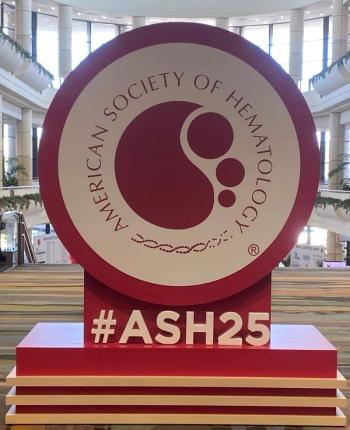
Study Finds Newborn Nursery to Be the Optimal Location to Administer Extended Half-Life RSV Antibodies
Administering extended half-life respiratory syncytial virus (RSV) antibodies in the newborn nursery would minimize access disparities and ensure optimal uptake, study authors posited.
Administering extended half-life antibodies for respiratory syncytial virus (
RSV is the most common cause of infant hospitalizations in the United States. Extended half-life antibodies, recently developed for single-dose administration to prevent RSV lower respiratory tract infection, are designed to be administered to infants before or during their first RSV season. The aim of the study was to “assess the time from birth hospitalization discharge to FOV [first outpatient visit] using data from the recent pre–COVID-19 and COVID-19 eras and reported separately for commercially insured and Medicaid infants.”
The study was conducted as a retrospective, observational, time-to-event analysis. Time to FOV was calculated separately for the COVID-19 (April 1, 2020, to September 30, 2021) and pre–COVID-19 (April 1, 2015, to January 31, 2020) time periods. Databases used for this study included the Merative MarketScan Commercial and Multi-State Medicaid databases.
Infants who had a date of birth between April 1, 2015, and September 30, 2021, and a birth hospitalization duration of 5 days or less were included in the study. Infants who were born between February 1, 2020, and March 31, 2020, were excluded due to disruptions in health care during the time period. Infants who died before discharge were also excluded. Evidence of enrollment in medical benefits within 31 days of birth was needed for inclusion.
Across both time periods, 73.8% of infants on Medicaid had an FOV within 5 days of discharge from their birth compared with 84.7% of infants who had commercial insurance. The COVID-19 time period featured higher FOV completion within 5 days of birth compared with the pre–COVID-19 period.
In the COVID-19 period, 77.7% of infants on Medicaid had an FOV within 5 days of birth discharge compared with 87.0% of infants with commercial insurance. This increased to 86.6% and 93.5%, respectively, after 14 days since birth discharge. The difference in time to FOV between infants born inside the RSV season and those born outside it was nonsignificant regardless of time period.
FOV completion within 5 days of birth discharge was much higher in urban infants who had commercial insurance (87.8%) compared with rural infants with commercial insurance (79.2%), urban infants with Medicaid (77.8%), and rural infants with Medicaid (76.9%). All infant groups had an increased FOV rate 14 days after birth discharge; these differences were smaller, but infants on Medicaid had lower FOV compared with their commercially insured counterparts (urban commercially insured, 93.8%; rural commercially insured, 90.8%; urban Medicaid, 86.6%; rural Medicaid 86.7%).
Hispanic infants were found to be most likely to complete their FOV within 5 days of discharge (urban Hispanic, 85.9%; rural Hispanic, 82.8%), followed by urban White (80.3%) and rural Black (80.1%) infants. These trends were consistent after 14 days from discharge. When evaluating across geographic regions, the Northeast was found to have the highest FOV rate within 5 days of discharge (90.0%) compared with the North Central (87.6%) and South (87.4%) regions.
Because the opportunity to administer the extended half-life RSV antibodies during an FOV varies across these characteristics, the researchers concluded that administration of the antibodies in a newborn nursery instead would “ensure optimal uptake and minimize access disparities” to the preventive therapy.
Reference
Nelson CB, Brady BL, Richards M, et al. Optimal site of care for administration of extended half-life respiratory syncytial virus (RSV) antibodies to infants in the United States (US). Vaccine. Published online August 15, 2023. doi:10.1016/j.vaccine.2023.06.089
Newsletter
Stay ahead of policy, cost, and value—subscribe to AJMC for expert insights at the intersection of clinical care and health economics.













































